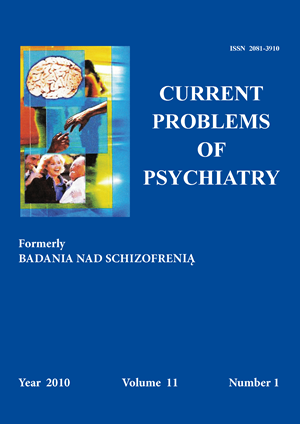Taksonomia leksykalna skojarzeń osobowych z polskimi politykami
Słowa kluczowe:
image, personal interview, free associations, lexical approach, lexical taxonomy, politiciansAbstrakt
According to lexical hypothesis, all meaningful individual differences are stored in language. Analyzing the structure of language, we can discover features that are responsible for the existence of individual differences. In order to establish visible features of personality among Polish politicians, a method of free associations has been used. This method is substantially free of theoretical foundations and it can serve as a tool to explore the structure of language that is used to describe politicians. For this reason, 100 interviews have been conducted with people between 19 and 64 years old. Each person had to produce as much associations as they could. The associations concerned 25 the most well-known and recognizable politicians in Polish politics. All 11776 associations that were gathered from this survey, have been classified by 9 judges, based on taxonomy by Angleitner, Ostendorf and John [1]. The article presents the results of classification and the means to use it in future research on dimension of politicians’ personality.
Bibliografia
1. Angleitner, A., Ostendorf, F., John, O.P. Towards a taxonomy of personality descriptors in German: A psycho-lexical study. Eur. J. Pers., 1990;4: 89-118.
2. Caprara, G.V., Zimbardo, P.G. Personalizing Politics: A Congruency Model of Political Preference. Am. Psychol., 2004; 59(7): 581-594.
3. Wattenberg, M.P. The rise of candidat-centred politics: Presidential elections of the 1980s. Cambridge, MA; Harvard University Press: 1991.
4. Miller, A.H., Wattenberg, M.P., Malanchuk, O. (1986). Schematic assessment of residential candidates. Am. Polit. Sci. Rev., 1986; 80: 521-540.
5. Kaase, M. Is There Personalization in Politics? Candidates and Voting Behavior in Germany. I. Polit. Sci. Rev., 1994; 15: 211-230.
6. Klingemann, H.D., Wattenberg, M.P. Decaying versus developing party systems. Br. J. Polit. Sci., 1992; 22: 131-149.
7. Cwalina, W., Falkowski, A., Kaid, L.L. Role of Advertising in Forming the Image of Politicians: Comparative Analysis of Poland, France and Germany. Media Psychology, 2000; 2(2): 119-147.
8. Pancer, M.S., Brown, S.D., Barr, C.W. Forming Impres-sions of Political Leaders: A Cross-National Comparison. Polit. Psychol., 1999; 20(2): 345-368.
9. Caprara, G.V., Barbaranelli, C., Zimbardo, P.G. Politician’s uniquely restricted personalities. Nature, 1997; 385: 493.
10. Caprara, G.V., Barbaranelli, C., Zimbardo, P.G. When Parsimony Subdues Distinctiveness: Simplified Public Perceptions of Politicians’ Personality. Polit. Psychol., 2002; 23(1): 77-95.
11. Błaszczyk, E., Gorbaniuk, O. Wymiary postrzegania osobowości polskich polityków: analiza indywidualnych struktur czynnikowych. W: Miluska J. red., Polityka i politycy. Diagnozy-oceny-doświadczenia Poznań; Wydawnictwo Naukowe UAM: 2009, s. 263-278.
12. Gorbaniuk, O. Wymiary dyferencjacji profili osobowości polskich polityków: analiza danych zagregowanych. Psy-chologia Społeczna, 2009; 1-2(10-11): 88-105.
13. Supphellen, M. Understanding core brand equity: guidelines for in-depth elicitation of brand associations. International Journal of Market Research, 2000; 42(3): 319-338.
14. John, O., Angleitner, A., Ostendorf, F. The lexical approach to personality: a historical review of trait taxonomic research. Eur. J. Pers., 1988; 2: 171-203.
15. Goldberg, L.R. An Alternative ‘Description of personality’: The Big-Five factor structure. J. Pers. Soc. Psychol., 1990; 59: 1216-1229.
16. Ashton M.C., Lee K., Perugini M., Szarota P., de Vries R.E., Di Blas L., Boies K., De Raad B. A six-factor structure of personality-descriptive adjectives: Solutions from psycholexical studies in seven languages. J. Pers. Soc. Psychol., 2004; 86(2): 356-366.
17. Szarota, P. Polska lista przymiotnikowa (PLP): narzędzie do diagnozy pięciu wielkich czynników osobowości. Studia Psychologiczne, 1995; 23(1-2): 227-255.
18. Szarota, P., Ashton, M.C., Lee, K. Taxonomy and structure of the Polish Personality Lexicon. Eur. J. Pers., 2007; 21(6): 823-853.
19. Schmitt, N. Uses and Abuses of Coefficient Alpha. Psychological Assessment, 1996; 8(4): 350-353.
20. Gorbaniuk, O., Czarnecka, E., Chmurzyńska, M. Taksonomia i struktura postrzegania siebie i innych w świetle polskich badań leksykalnych. Niepublikowany raport z badań., 2010.


